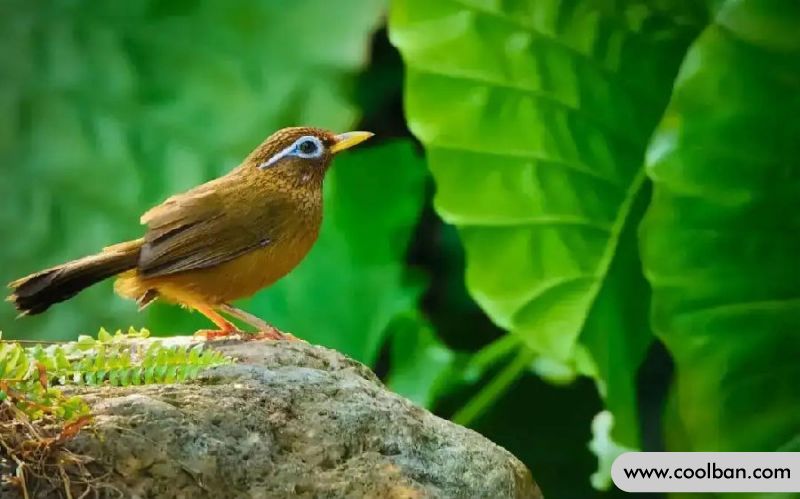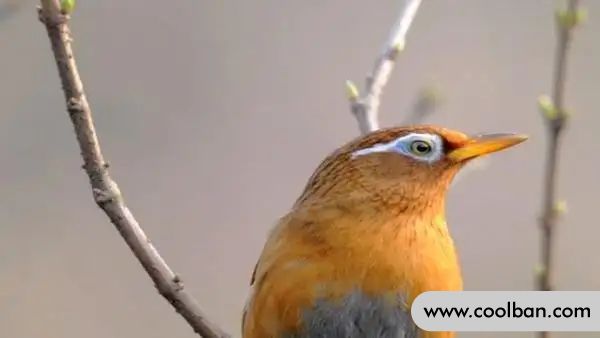The morphological appearance of the thrush
The appearance of the thrush is very simple. Although there are no colorful feathers, the bird has a very loud voice and a melodious song. It is very pleasant and has always been a famous cage bird in China.
Thrush likes to perch in bushes on mountains and in bushes or bamboo forests near villages. They are alert and timid, often foraging in the grass under the forest, and are not good at flying long distances. During the breeding season, males hide alone among weeds and branches. It is very good at singing. The sound is very loud and the songs are melodious. Omnivorous, feeding mainly on insects, especially during the breeding season; it also eats herb seeds and wild fruits. Distributed in Laos, northern Vietnam and the southeastern coastal areas of China, it is a resident bird in central China, southern China, Hainan and Taiwan.

Morphological appearance of thrush
Juvenile thrushes have distinctly different body colors from adult thrushes. The 7-month-old juvenile has a light brown upper body, no vertical stripes, no transverse spots on the tail, and brown-white underparts without vertical and horizontal stripes. Nine-month-old juveniles are similar to adults, but with slightly darker plumage, with dark brown vertical stripes on the top of the head to the upper back, throat to the chest.
Male and female thrushes have similar plumage. The forehead is tan, the top of the head to the upper back is tan, and there are broad black-brown longitudinal stripes from the forehead to the upper back. The longitudinal stripes are dark in the front and light in the back. It extends into a thin line to the side of the neck, like an eyebrow pattern, so it is called thrush (Taiwan subspecies has no eyebrow pattern). Dark brown eye feathers and ear feathers on the head side, upper wing coverts brown olive brown on the rest of the upper body, dark brown wing feathers, outer flight feathers, outer feathers decorated with brown fringes, insole also wide brown fringe . The inner flight feathers are tan and olive brown, the tail feathers are dark brown or dark brown, with many inconspicuous dark brown horizontal spots, and the tail is dark brown. The chin, throat, upper chest and thoracic side are brownish yellow with black-brown longitudinal stripes, the rest of the lower body is also brownish-yellow, the flanks are darker without longitudinal stripes, the middle of the abdomen is dirty gray, the perianal area is brown, and the underwing coverts are Brownish yellow.

The body of the thrush is slender, with a slightly large fusiform in the middle of the two ends, and the outline is streamlined. Generally, the upper body feathers are olive-colored, the lower belly feathers are greenish-brown or yellow-brown, and the middle of the lower belly feathers are gray-white without stripes; the feathers on the head, chest, neck, and tail are darker, with black or horizontal stripes. Its eye circles are white, and each eye has a white eyebrow, extending symmetrically from front to back, mostly crescent-shaped and eyebrow-shaped, very beautiful.
The front end of the thrush's head has a horny beak, which is an organ used to peck, comb feathers, fight, and sing. The muzzle is generally about 20-25 mm long, with the upper muzzle slightly longer than the lower muzzle. The cuticle of the upper beak is brown-black with a larger area, and the cuticle of the lower beak is brown-black, but lighter in color and smaller than the upper beak. There are nostrils on the back and upper side of the muzzle. A long black beard grows near his forehead.

Its two eyelids are round. Due to the different visual pigments in the eyes, various colors of "eye sand" are produced. There is a layer of nictitating membrane on the outside of the eyeball, which usually opens and closes tightly during flight to protect the eyeball. The outermost layer of the eyeball has an eye ring, which also protects the eyeball. There are soy-sized ear holes behind the eyes, surrounded by ear hairs that help collect sound waves.
The thrush has longer wings, and the flight feathers are about 75 mm long from the prothorax to the back. When the wings are unfolded, the left and right sides are 90-110 mm wide. Thrushes lack glands. The only skin glands are called the caudal glands, which are born at the base of the tail feathers and secrete oils to protect the feathers from deformation and waterproofing. The lower part of the body is claws, generally pale yellowish brown, and the shin is about 40 mm high.
